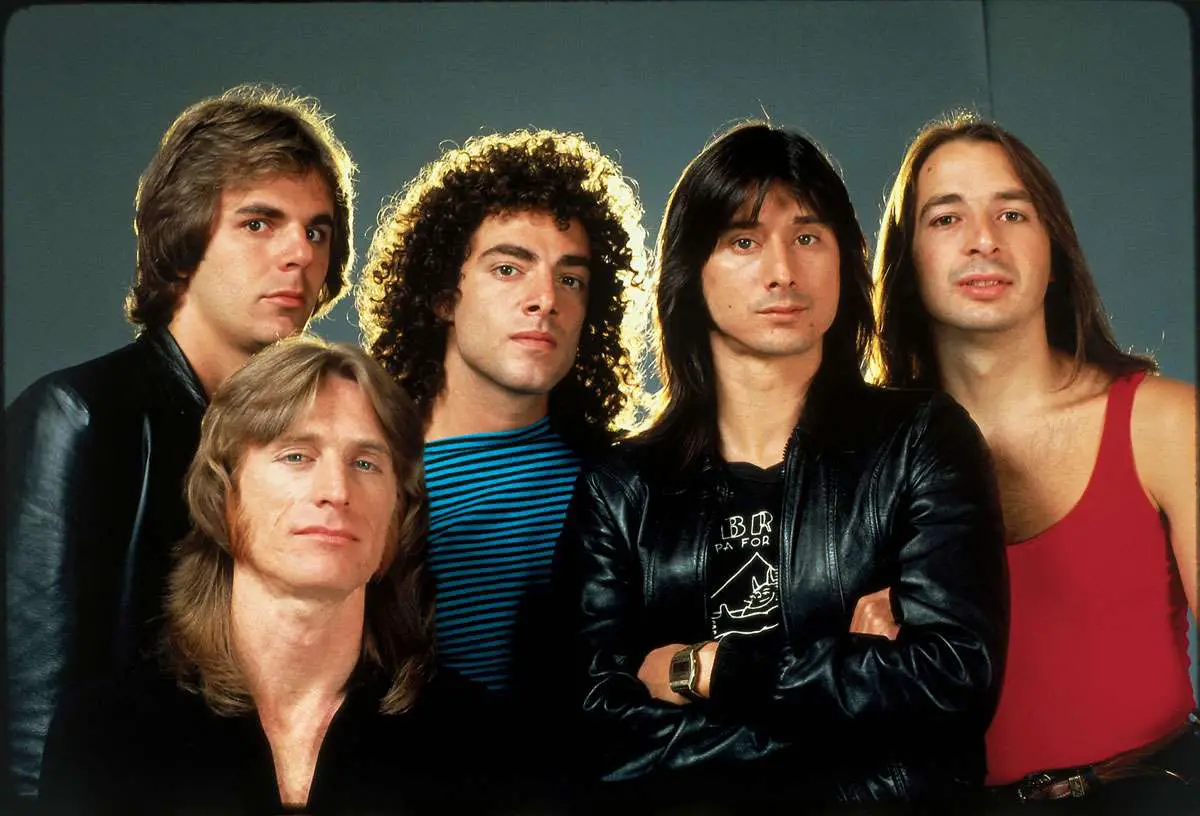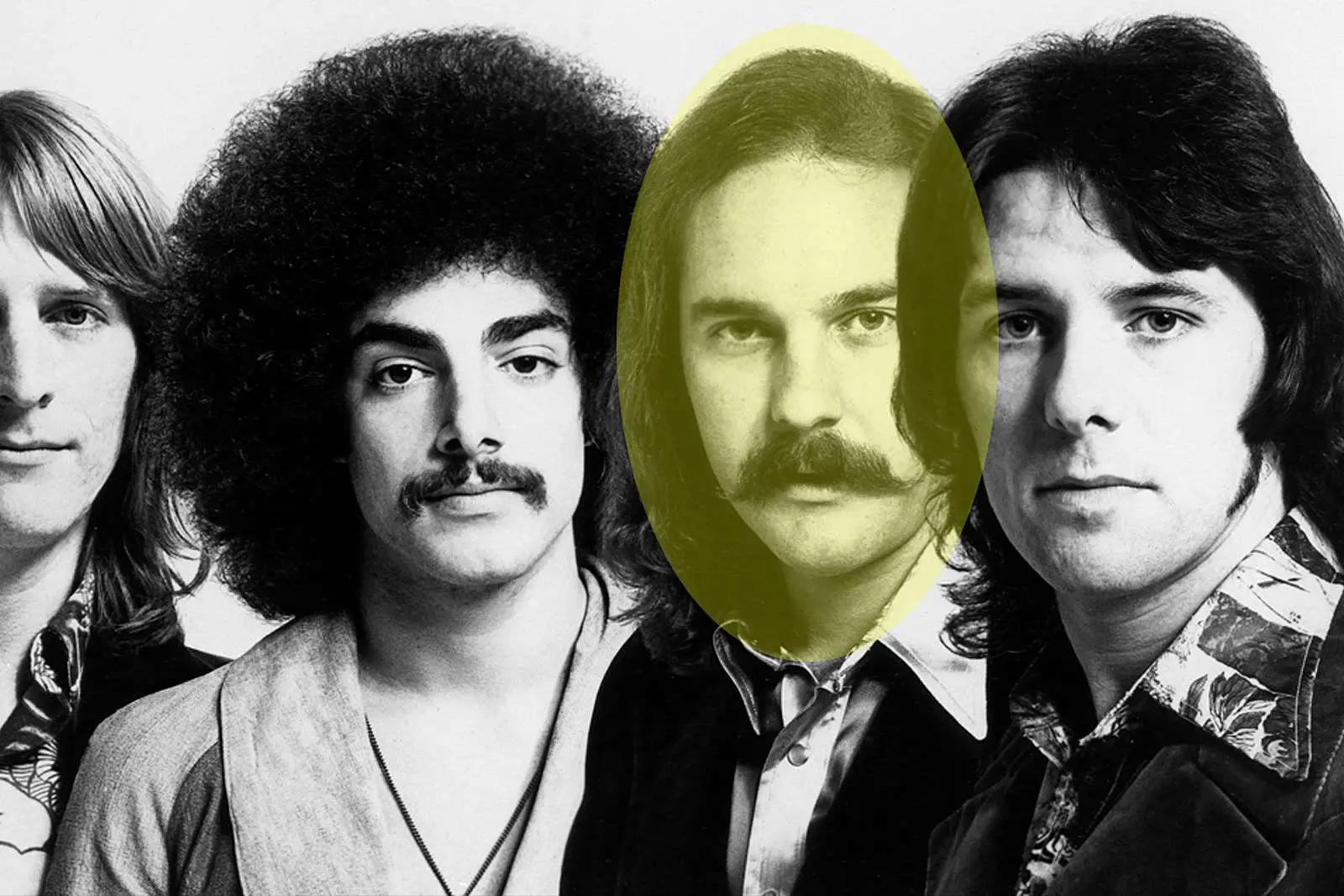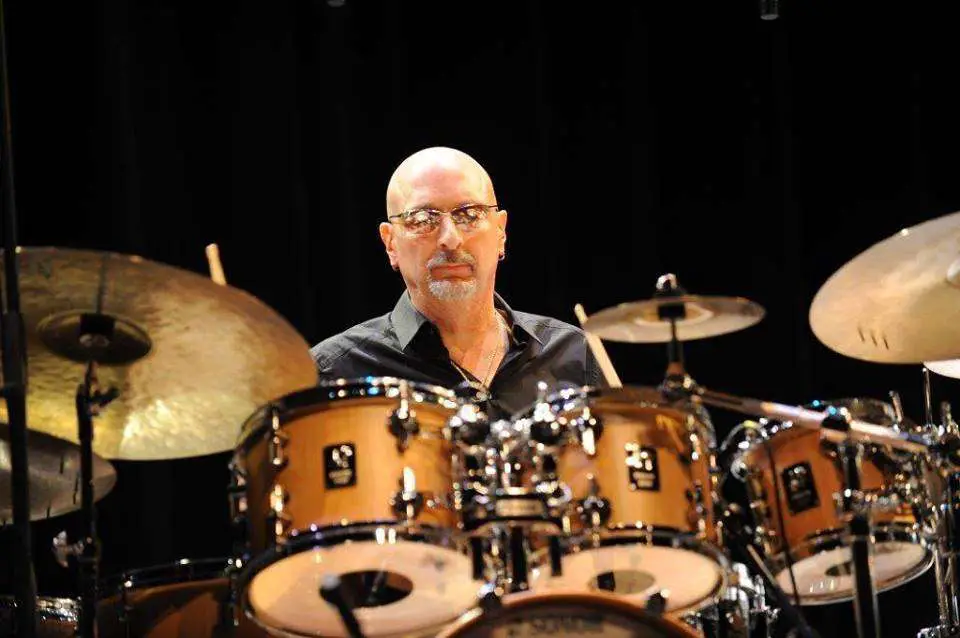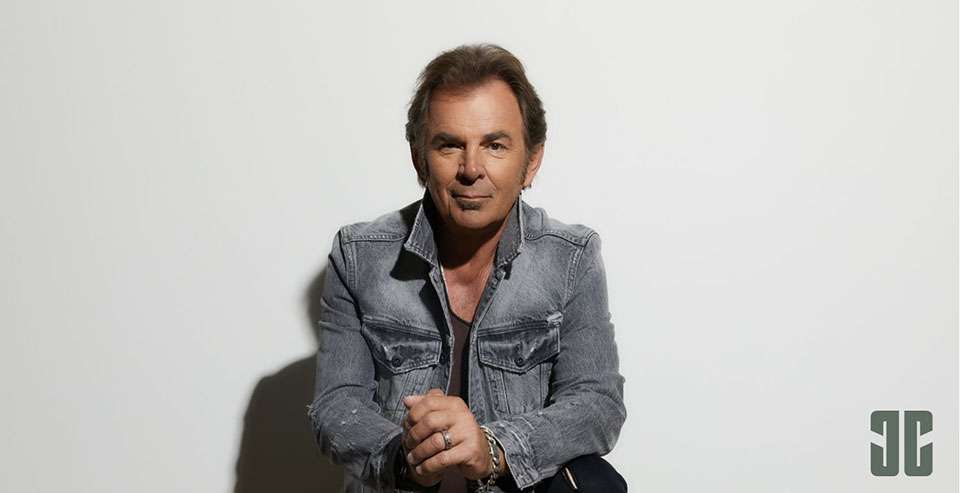Journey, the American rock band, has captivated audiences with their anthemic ballads and electrifying performances since 1973. At the core of their sound lies the extraordinary guitar playing that has become synonymous with their music. Throughout the band’s illustrious history, but there wasn’t just a single guitar player for Journey, there was several guitarists that have left an indelible mark on the band’s signature sound.
In this article, we delve into the guitar players who have contributed their exceptional talents to Journey, exploring their backgrounds, musical journeys, and the lasting impact they have had on the band’s legacy.

Neal Schon: The Guitar Virtuoso
Neal Schon, renowned for his extraordinary guitar skills and melodic sensibility, is a true virtuoso whose talent has left an indelible mark on the rock music scene. With a career spanning over five decades, Journey’s Neal Schon has captivated audiences worldwide with his technical prowess, soulful playing, and impeccable sense of melody.
Early Days and Musical Prodigy
Neal Schon was born on February 27, 1954, in Tinker Air Force Base, Oklahoma. From an early age, it was clear that Schon possessed an exceptional talent for music. He began playing the guitar at the tender age of five, displaying a natural affinity for the instrument. Schon’s dedication to his craft quickly became apparent, as he spent countless hours honing his skills and immersing himself in the world of music.

Joining Santana and Early Success
Schon’s career took a significant turn when, at the age of 15, he caught the attention of Latin rock pioneer Carlos Santana. Recognizing Schon’s prodigious talent, Santana invited him to join his band, Santana, in 1971. This collaboration marked a breakthrough for the young guitarist, as he showcased his remarkable abilities on Santana’s critically acclaimed albums, including “Santana III” and “Caravanserai.” Members of Santana and Journey formed a short lived band called the Golden Gate Rhythm Section, which would soon form into what would become know as Journey.
Founding Member of Journey
In 1973, Neal Schon co-founded the iconic rock band Journey alongside keyboardist Gregg Rolie, bassist Ross Valory, and drummer Prairie Prince. Journey released their self-titled debut album in 1975, marking the beginning of a journey that would catapult them to international stardom. Schon’s guitar work on tracks like “Of a Lifetime” and “Topaz” demonstrated his melodic finesse and set the tone for Journey’s evolving sound.
Musical Style and Contributions
Neal Schon’s musical style is characterized by his seamless blend of technical proficiency, expressive phrasing, and a deep emotional connection to his playing. His ability to seamlessly transition between soaring, soulful solos and delicate melodic passages has become a hallmark of his guitar work. Schon’s contributions to Journey’s catalog of hits, such as “Lights,” “Wheel in the Sky,” and “Any Way You Want It,” have become iconic examples of his artistry and have solidified his status as a guitar legend.
Solo Ventures and Collaborations
In addition to his work with Journey, Neal Schon has pursued a successful solo career, releasing several albums that showcase his versatility as a musician and songwriter. His solo efforts, including “Late Nite” and “Beyond the Thunder,” allowed him to explore different musical genres and experiment with diverse sounds outside the realm of Journey’s collective vision. Schon has also collaborated with numerous artists across various genres, further expanding his artistic horizons and leaving an indelible mark on their respective projects.
Related: Who’s The Guitar Player For Queen?
George Tickner: The Founding Member
George Tickner, a pivotal figure in the early days of Journey, played a crucial role as a founding member of the band. While his time with Journey was relatively short-lived, Tickner’s contributions helped shape the band’s musical direction and set the stage for their future success.
Co-founding Journey
In the early 1970s, George Tickner joined forces with Neal Schon, Gregg Rolie, Ross Valory, and Prairie Prince to form the band that would eventually become Journey. Together, they embarked on a musical “journey” that aimed to push the boundaries of rock and roll. Tickner’s role as a rhythm guitarist provided a solid foundation for the band’s sound, allowing for intricate harmonies and melodic structures to flourish.
Musical Style and Contributions
Tickner’s musical style can be characterized as a fusion of rock and blues influences, providing a vital backdrop for the band’s early sound. His rhythmic guitar playing provided a sturdy framework for the intricate guitar work of Neal Schon, adding depth and texture to the overall composition. Tickner’s contributions can be heard on Journey’s self-titled debut album, released in 1975, where his distinctive playing style helped define the band’s early identity.

Departure from the Band
Following the release of Journey’s debut album, George Tickner made the difficult decision to depart from the band. While the specific reasons for his departure remain largely undisclosed, it is believed that creative differences and personal considerations played a role in his decision. Tickner’s departure marked a turning point for Journey, leading to lineup changes and the subsequent evolution of their sound under the leadership of Neal Schon and Jonathan Cain.
Related: The Guitar Player For Aerosmith
Gregg Rolie: The Multi-Talented Musician
Gregg Rolie, a versatile musician with exceptional keyboard and vocal abilities, played a pivotal role in the early success of Journey. As one of the founding members of the band, Rolie contributed his talents as a keyboardist and vocalist, helping to shape Journey’s sound during their formative years.
Journey’s Keyboardist and Vocalist
Gregg Rolie’s mastery of the keyboards and his soulful vocals added a distinct flavor to Journey’s early sound. His Hammond organ and piano playing created rich textures and melodic layers, enhancing the band’s overall musicality. Rolie’s smooth and emotive vocals provided a captivating presence, bringing depth and passion to Journey’s performances. His contributions as a keyboardist and vocalist can be heard on early Journey classics such as “Wheel in the Sky,” “Feeling That Way,” and “Anytime.”
Guitar Skills and Contributions
In addition to his keyboard and vocal talents, Gregg Rolie also possessed considerable guitar skills. While not primarily known for his guitar playing, Rolie’s rhythmic and melodic guitar work added an extra dimension to Journey’s music. His guitar contributions provided a solid foundation and complemented Neal Schon’s intricate lead guitar lines, contributing to the band’s unique blend of rock, pop, and progressive elements.

Transition and Formation of a New Sound
As Journey’s sound evolved over time, Gregg Rolie played a significant role in the transition from their earlier progressive rock-oriented style to a more commercially successful sound. In the late 1970s, the band underwent changes that included the addition of guitarist Neal Schon and the departure of George Tickner. This lineup shift marked a turning point for Journey, as they began to embrace a more radio-friendly sound and explore a fusion of rock, pop, and arena rock elements.
Rolie’s collaboration with Neal Schon and the introduction of Jonathan Cain as a songwriter and keyboardist propelled Journey toward their breakthrough success. Rolie’s contributions to albums like “Infinity” and “Evolution” helped shape the band’s transition to a more accessible and commercially appealing sound. His keyboard prowess and vocal performances remained vital components of Journey’s evolving identity during this transformative period. It was about this time in 1977, that Journey also introduced a new lead singer, Steve Perry.
Related: The Guitar Player For The Eagles
Steve Smith: The Drummer Turned Guitarist
Steve Smith, widely recognized as one of the most accomplished drummers in rock music, made a significant impact during his tenure with Journey. While primarily known for his drumming prowess, Smith also ventured into guitar playing, showcasing his versatility as a musician. In this section, we explore Steve Smith’s role as Journey’s renowned drummer, his transition to guitar playing, and his contributions to the band’s musical evolution.
Journey’s Renowned Drummer
Steve Smith’s tenure as Journey’s drummer spanned two significant eras for the band: the late 1970s and the early 1980s. Known for his technical precision, impeccable timing, and dynamic playing, Smith brought a level of musicianship that elevated Journey’s sound to new heights. His drumming can be heard on iconic hits like “Don’t Stop Believin’,” “Separate Ways (Worlds Apart),” and “Open Arms,” which have become anthems of the rock music genre.
Transition to Guitar Playing
While Steve Smith’s drumming abilities were unquestionably his forte, he also displayed a keen interest in guitar playing. During his time with Journey, Smith began experimenting with the guitar, using it as a creative outlet and a means to explore different musical avenues. This transition allowed him to further expand his musical horizons and contribute to the band’s songwriting process from a different perspective.

Contributions and Musical Evolution
Steve Smith’s transition to guitar playing opened up new possibilities for Journey’s musical evolution. While his guitar contributions may not have been as prominent as his drumming, they added another layer of depth to the band’s compositions. Smith’s guitar work showcased a melodic sensibility and a rhythmic approach influenced by his background as a drummer. His contributions helped shape Journey’s evolving sound as the band explored more diverse musical elements and incorporated intricate guitar harmonies into their arrangements.
Furthermore, Smith’s versatility as a musician allowed him to contribute to the band’s overall musical direction. His deep understanding of rhythm and dynamics helped shape the foundation upon which the band’s songs were built. Smith’s collaborative efforts with his bandmates facilitated the exploration of complex time signatures and unconventional song structures, pushing the boundaries of Journey’s sound and adding a progressive edge to their music.
Jonathan Cain: Keyboardist and Rhythm Guitarist
Jonathan Cain, a key member of the iconic rock band Journey, is recognized for his multifaceted talents as a keyboardist and rhythm guitarist. Cain’s contributions to Journey’s music, both as a songwriter and instrumentalist, have played a crucial role in shaping the band’s sound and contributing to their enduring success.
Joining Journey and Musical Contributions
Jonathan Cain joined Journey in 1980, bringing with him a wealth of musical experience and songwriting prowess. His addition to the band marked a pivotal moment in their history as Journey transitioned towards a more commercially successful sound. Cain’s keyboard skills added rich layers of texture and melody to the band’s music, helping to define their signature sound during the 1980s.
Cain’s musical contributions can be heard on numerous Journey hits, including “Open Arms,” “Faithfully,” and “Who’s Crying Now.” His ability to craft memorable melodies and incorporate tasteful keyboard arrangements has left an indelible mark on Journey’s discography, contributing to their chart-topping success and enduring popularity.
Songwriting and Keyboard Innovations
Jonathan Cain’s songwriting abilities have been instrumental in Journey’s success. His collaborations with other band members, such as lead singer Steve Perry and Neal Schon, have resulted in some of the band’s most beloved songs. Cain’s contributions often revolve around themes of love, hope, and personal journeys, resonating deeply with audiences around the world.
Furthermore, Cain’s keyboard innovations have helped shape Journey’s sound and set them apart from other rock bands of their time. His use of synthesizers, layered textures, and atmospheric tones added a contemporary edge to Journey’s music, allowing them to explore new sonic territories while maintaining their signature sound.
Role as Rhythm Guitarist
In addition to his keyboard prowess, Jonathan Cain also served as Journey’s rhythm guitarist. While his guitar playing may not have been as prominent as Schon’s lead guitarist work, Cain’s contributions to rhythm guitar provided a solid foundation for the band’s sound. His rhythmic precision and chord voicings complemented the band’s overall musicality, creating a cohesive and powerful sonic landscape.
Cain’s role as a rhythm guitarist allowed him to lock in with the band’s rhythm section, providing a tight and driving groove that formed the backbone of many Journey classics. His playing can be heard on songs like “Separate Ways (Worlds Apart)” and “Wheel in the Sky,” where his rhythmic contributions added depth and intensity to the music.

Continuing Influence and Collaboration
Jonathan Cain’s influence extends beyond his contributions to Journey. His songwriting and keyboard innovations have had a lasting impact on the rock music genre. Cain’s ability to craft emotionally resonant melodies and incorporate innovative keyboard arrangements continues to inspire musicians and songwriters worldwide.
Furthermore, Cain’s collaborations with other artists, both within and outside of Journey, have showcased his versatility and musical range. His collaborations with artists such as Michael Bolton, Kenny Rogers, and Larry Stewart have demonstrated his ability to adapt and thrive in different musical contexts.
Other Accomplishments
In 1980, Journey was featured on the Japanese movie soundtrack “Yume, Ato No Yume.” While the movie was not commercially successful, Journeys progressive tracklist overshadowed the film. Yume, Ato No Yume, or “Dream After Dream”, remains a cult classic and favorite among hard core Journey fans.
Related: How To Play Japanese Chord Progressions
At this point, it was clear that Journey had solidified themselves as American Rock Legends. In 2017, it was announced that Journey would be indited into to Rock and Roll Hall of Fame.
In 2022 Journey Guitarist Neal Schon and Jonathan Cain got into a heated argument over the bands reputation for Cain’s decision to perform “Don’t Stop Believin’ ” in the White House for former US president Donald Trump. Schon was angry with Cain’s his lack of consideration and potential bad publicity it might bring upon the band, insisting that his politcal views are his own personal business.
The two already had a history of disputes and lawsuits over spending on the band’s joined credit card.
Conclusion
Journey‘s enduring legacy in the rock music landscape owes much to the exceptional guitar players who have contributed their talents to the band. Schon’s virtuosic playing, George Tickner’s founding influence, Gregg Rolie’s multifaceted contributions, and Steve Smith’s transition from drums to the guitar have all played pivotal roles in shaping Journey’s sound.
However, it is Schon’s remarkable guitar skills and his ability to craft memorable melodies and epic guitar solo that have become synonymous with Journey songs. His distinctive sound continues to resonate with fans and aspiring guitarists alike, ensuring that Journey’s guitar legacy remains an integral part of rock music history for generations to come.
